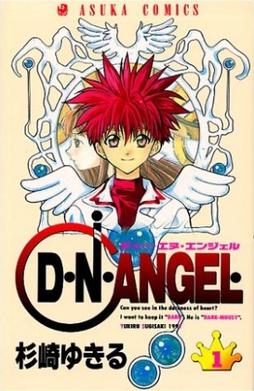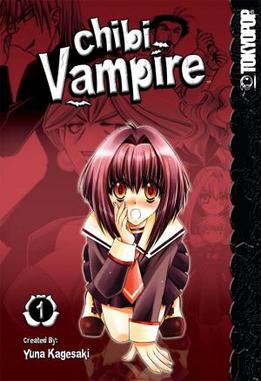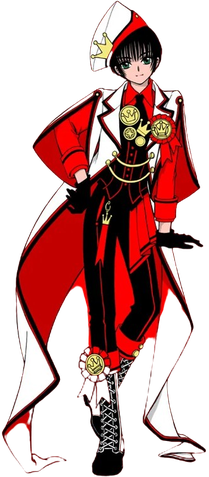
The Vision of Escaflowne is a Japanese anime television series created by Shōji Kawamori with Sunrise Studios and directed by Kazuki Akane. It premiered from April to September 1996, on TV Tokyo. Sony's anime satellite channel, Animax also aired the series, both in Japan and on its various worldwide networks, including Hong Kong, Taiwan, and Southeast Asia. It was licensed for Region 1 release by Bandai Entertainment.

Mobile Fighter G Gundam, also known in Japan as Mobile Fighting Legend G Gundam, is a 1994 Japanese animated television series produced by Sunrise and the fifth installment in the long-running Gundam franchise. The series is set in the "Future Century", where space colonies representing countries have agreed to hold an organized fighting tournament known as the "Gundam Fight" every four years to settle their political differences in place of war. Each colony sends a representative fighter piloting a giant, humanoid mecha called a Gundam to battle on Earth until only one is left, and the winning nation earns the right to govern over all the colonies until the next tournament. The events of G Gundam follow Domon Kasshu, the pilot of Neo Japan's Shining Gundam during the 13th Gundam Fight. Domon's mission is to both win the tournament and to track down his older brother, who is believed to have stolen the mysterious Devil Gundam from the Neo Japan government.

Mobile Suit Gundam SEED is an anime series developed by Sunrise and directed by Mitsuo Fukuda. The ninth installment in the Gundam franchise, Gundam SEED takes place in a future calendar era, in this case the Cosmic Era. In this era, mankind has developed into two subspecies: Naturals, who reside on Earth, and Coordinators, genetically enhanced humans capable of amazing feats of intellect who emigrate to man-made orbital colonies to escape persecution by natural humans. The story revolves around a young Coordinator Kira Yamato who becomes involved in the war between the two races after a third, neutral faction's space colony is invaded by the Coordinators.
Lupin III, also written as Lupin the Third, Lupin the 3rd, or Lupin the IIIrd, is a Japanese media franchise created by Monkey Punch. The series follows the endeavors of master thief Lupin III, grandson of gentleman thief Arsène Lupin, joined by his criminal gang. The original Lupin III manga began in Weekly Manga Action on August 10, 1967.

D.N.Angel is a Japanese manga series written and illustrated by Yukiru Sugisaki. The manga premiered in Japan in the Kadokawa Shoten shōjo magazine Monthly Asuka in November 1997. After two extended hiatuses the series concluded in 2021. Kadokawa Shoten has collected the individual chapters and published them in 15 tankōbon and 5 e-books. The manga series is licensed for English language release in North America and the United Kingdom by Tokyopop, which has released 13 volumes of the series as of 2011.

Bobobo-bo Bo-bobo is a Japanese manga series written and illustrated by Yoshio Sawai. It was serialized in Shueisha's shōnen manga magazine Weekly Shōnen Jump from February 2001 to November 2005, with its chapters collected in 21 tankōbon volumes. It was followed by a sequel titled Shinsetsu Bobobo-bo Bo-bobo, serialized from December 2005 to July 2007, with its chapters collected in seven tankōbon volumes. In North America, Viz Media published some volumes of the manga.

Sailor Moon Sailor Stars, or simply Sailor Stars, is the fifth and final season of Sailor Moon, a Japanese magical girl anime series based on the Sailor Moon manga series by Naoko Takeuchi; the season was directed by Takuya Igarashi and produced by Toei Animation. Like the rest of the Sailor Moon series, it follows the adventures of Usagi Tsukino and her fellow Sailor Guardians. The season is divided into two story arcs, with the first 6 episodes consisting of a self-contained arc exclusive to the anime in which the Sailor Guardians encounter Queen Nehelenia again. The remaining 28 episodes adapt material from the "Stars" arc of the manga, in which the Sailor Guardians meet up with the Sailor Starlights, led by Princess Kakyuu. They discover that Sailor Galaxia, the leader of the "Shadow Galactica" organization and a corrupted Sailor Guardian, plans to increase her powers and rule the Milky Way.

Brain Powerd is a Japanese anime television series created by Sunrise. It was directed and written by Gundam creator Yoshiyuki Tomino and features mecha designs by Mamoru Nagano, character designs by Mutsumi Inomata, and music by Yoko Kanno. The 26 episodes of the series originally premiered on the satellite channel WOWOW between April and November 1998. The series was also aired across Japan on the anime network Animax, which also later broadcast the series across its respective networks worldwide, including its English language networks in Southeast Asia and South Asia. Animax aired Bandai Entertainment's localization, the series' English language television premiere. The anime series was licensed by Bandai and distributed across the region on DVD under the title Brain Powered.

Chibi Vampire, originally released in Japan as Karin, is a Japanese manga series written and illustrated by Yuna Kagesaki. The story is about an unusual vampiress girl, who instead of drinking blood must inject it into others because she produces too much. Chibi Vampire first premiered in the shōnen magazine Monthly Dragon Age in the October 2003 issue, and ran until February 2008. The individual chapters were published by Kadokawa Shoten into fourteen collected volumes. Later an anime series for "Chibi Vampire" was also produced in 2005. This anime series has a somewhat similar but different story and ending.

Trinity Blood is a series of Japanese light novels written by Sunao Yoshida with illustrations by Thores Shibamoto and originally serialized in The Sneaker. Set 900 years after an apocalyptic war between humans and vampires, the series focuses on the ongoing cold war between the Vatican, the human government, and the "New Human Empire", the government of the vampiric Methuselah. Fighting on the Vatican's side is Abel Nightroad, a Crusnik—a vampire that feeds on vampires. The novels blend science fiction, fantasy, and political intrigue, with some in the Vatican and the Empire striving for peace, and the Rosen Kreuz Order doing anything in its power to stop it.

Junjo Romantica: Pure Romance is a Japanese boys love manga series by Shungiku Nakamura. It focuses on four storylines: the main couple, which comprises the bulk of the books, and three other male couples that provide ongoing side stories. It has expanded into several CD-dramas, a manga series running in Asuka Ciel, a light novel series titled "Junai Romantica" running in The Ruby magazine, and a 37-episode anime series.
Illumitoon Entertainment was a production company based in Fort Worth, Texas that specialized in anime. It was founded in January 2006 by former Funimation executives Stephanie Giotes, Richard Ray, and Barry Watson. Illumitoon's goal was to have its shows aired on television and offer unedited dual language DVDs.

Subaru Sumeragi is the fictional protagonist of Clamp's manga series Tokyo Babylon. The head of the Sumeragi clan, Subaru is a young onmyōji in charge of exorcising demons and helping spirits reach the afterlife, while living with his twin sister Hokuto and love interest Seishiro Sakurazuka. Following the events of Tokyo Babylon, an adult Subaru appears in the live-action film Tokyo Babylon 1999 investigating a murder case. He becomes one of mankind's seven protectors in Clamp's series X, and Seishiro is his new rival. Subaru's fate in the battle of the end of the world has differed across X's multiple animated adaptations. An alternate version of the character appears in Clamp's crossover series, Tsubasa: Reservoir Chronicle.

Kamui Shiro, also written as Kamui Shirou, is a fictional character that was created by Clamp and introduced as the protagonist of the manga series X. Kamui is a young esper who returns to his home, Tokyo, after a six-year absence following his mother's last will. According to her, he can change the world's fate. He can either join the groups a Dragons of Heaven or Dragons of Earth and fight for mankind or the nature, respectively. Kamui has also appeared in the animated adaptations of X, in which he follows a different course of action, and he also appears as an alternative persona from a post-apocalyptic Tokyo in the manga Tsubasa: Reservoir Chronicle.

Deadman Wonderland is a Japanese manga series written and illustrated by Jinsei Kataoka and Kazuma Kondou. It was serialized in Kadokawa Shoten's Monthly Shōnen Ace from April 2007 to July 2013, with its chapters collected in 13 tankōbon volumes. Tokyopop acquired the licensing rights to distribute the manga in English and released the first five volumes before the company shut down its North American publishing division in 2011. The series was later licensed by Viz Media, who published the 13 volumes from February 2014 to February 2016.

Fuma Monou, also written Fuuma Monou, is a fictional character created by the artists Clamp introduced in their manga series X. Fuma appears to be an ordinary, young man who is friends with protagonist Kamui Shiro. However, his frequent encounters with Kamui and Kamui's power has made him develop a cold-blooded alter-ego, who joins the Dragons of Earth to eliminate mankind, preserve the Earth and kill Kamui's own group, the Dragons of Heaven. Fuma also appears in an animated film and television series based on the manga, both of which have a different outcome because Clamp did not finish the X manga. An alternative version of the character has appeared in the Clamp's manga, Tsubasa: Reservoir Chronicle, as a rival of another Kamui.

Blood-C is a 2011 Japanese anime television series co-created by studio Production I.G and manga artist group CLAMP. It is the second anime series in the Blood franchise following the 2005–2006 series Blood+. The original 12-episode series aired during 2011, with a sequel film, Blood-C: The Last Dark releasing in Japanese theaters the following year. The anime was subsequently adapted into two manga, a 2011 novelization, a 2015 stage play, and three live-action films.

Nana Maru San Batsu, called Fastest Finger First in English, is a Japanese manga series by Iqura Sugimoto. An anime television series adaptation by TMS Entertainment aired from July 4 to September 19, 2017.
















